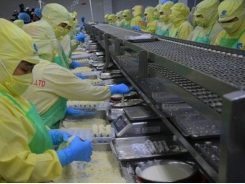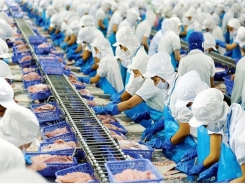Vietnam seeks to catch up with seafood export targets

In 2019, fierce competition in foreign markets pushed down the price of Vietnamese seafood exports, which fell short of their revenue target. Vietnam Economic News’ Thuy Duong spoke about this with Truong Dinh Hoe, Secretary General of the Vietnam Association of Seafood Exporters and Producers (VASEP).
What is your assessment of seafood exports in 2019?
According to our statistics, seafood exports reached almost US$9 billion in 2019, US$1.5 billion lower than the target. There were many reasons for this. In 2019, fierce competition in foreign markets caused Vietnamese enterprises to export seafood at lower prices and fail to reach the export revenue target despite increases in export volume. In early 2019, the industry expected to benefit from incentives of some trade agreements, but these have not yet materialized. For example, the sector was expected to benefit from the EU-Vietnam Free Trade Agreement’s (EVFTA) tariff incentives from 2019, but the agreement has not taken effect yet.
Other reasons for the decline in seafood export revenue included anti-dumping taxes in the US and increased trade protection in Europe.
What are the sector’s 2020 targets?
We set a modest target of reaching an export value of US$10 billion in 2020 because we foresee continued difficulties. We will have to make major efforts to increase the revenue by US$1 billion. The US$10 billion will include US$2 billion in trade with the EU (the 2019 revenue was US$1.5 billion), US$1.5 billion in trade with China, and US$1 billion in trade with the Republic of Korea (RoK).
What will the sector do in 2020 to reach its targets?
Firstly, the fisheries sector will improve its production chain and develop the best aquaculture products possible by managing input supply chains for farming activities in order to reduce production costs. The sector will increase certification activities for fisheries, including ASC (Aquaculture Stewardship Council) certification in the EU, as well as increasing self-certification of origin for businesses.
Secondly, the sector will apply pedigree and breed management measures to ensure a balance between Tra fish supply and demand to avoid price decreases like those in 2019 and reach sales of more than US$2 billion in 2020.
The sector will have proper trade promotion programs for specific markets. The industry will focus on two important member markets of the CPTPP (Comprehensive and Progressive Agreement for Trans-Pacific Partnership) - Mexico and Canada - which experienced high growth in 2019.
Thirdly, it will also focus on making use of tax incentives offered by the Vietnam-Korea Free Trade Agreement (VKFTA) and the CPTPP agreement. The industry will continue negotiations to expand some new markets in the Middle East and ASEAN (Association of Southeast Asian Nations) to increase export opportunities.
Fourthly, the sector will assist businesses and anglers in getting the EU to lift its yellow card barrier to seafood exports related to illegal, unreported and unregulated (IUU) fishing to regain the prestige of Vietnamese seafood products.
We will regularly work and exchange information with businesses to realize the above-mentioned solutions and reach 2020 targets. We will work with the Ministry of Industry and Trade in providing market access information related to markets with which Vietnam signed free trade agreements.
In 2019, seafood exports reached only US$9 billion, US$1.5 billion lower than the target. Export difficulties are forecast to persist and the fisheries sector set a US$10-billion export target for 2020.
Có thể bạn quan tâm
Phần mềm

Phối trộn thức ăn chăn nuôi

Pha dung dịch thủy canh

Định mức cho tôm ăn

Phối trộn phân bón NPK

Xác định tỷ lệ tôm sống

Chuyển đổi đơn vị phân bón

Xác định công suất sục khí

Chuyển đổi đơn vị tôm

Tính diện tích nhà kính

Tính thể tích ao hồ



 Hà Tĩnh cage fish farmers restore production
Hà Tĩnh cage fish farmers restore production  Diversification of aquaculture – will it ever happen…
Diversification of aquaculture – will it ever happen…